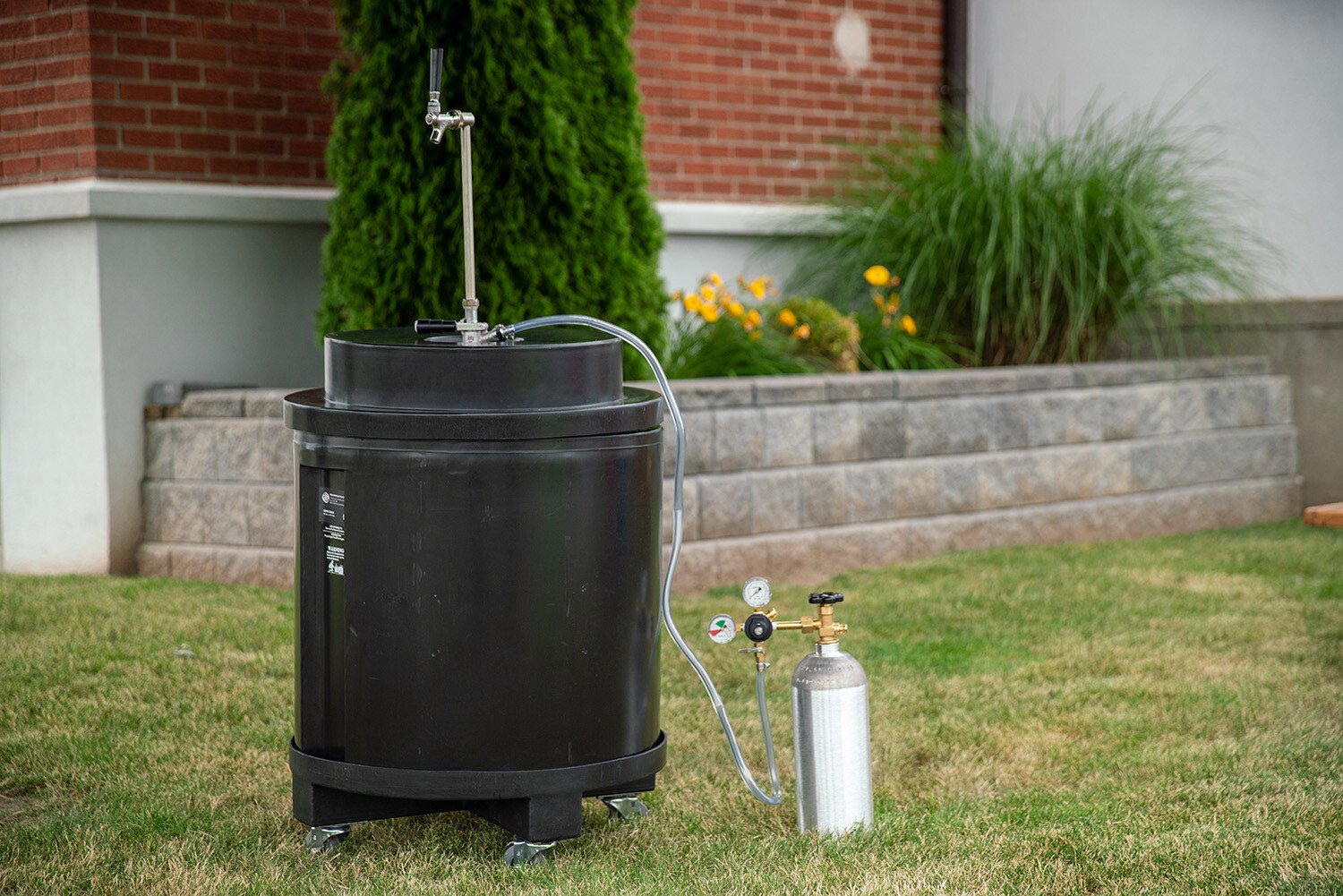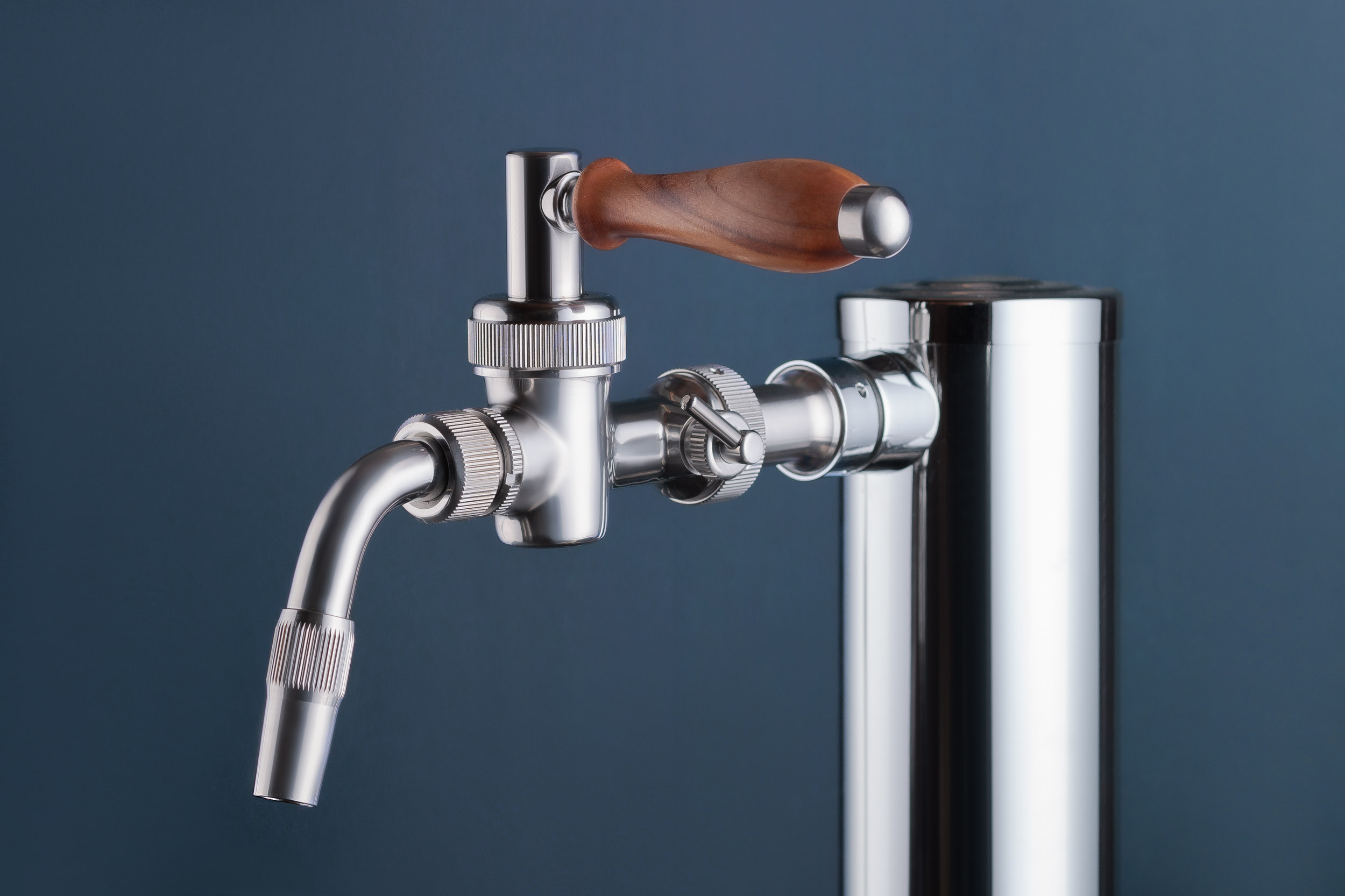I learned something last night that I simply HAD to share. Apparently, the term "malt liquor" does not only apply to crappy beers, typically found in a 40-ounce bottle (think Colt Ice).
No, apparently the difference between beer, malt liquor and barley wine is based on alcohol by volume (ABV) alone. Not kidding.
Here's the breakdown:
Beer is classified as such with ABVs of up to 5%. That's it. So if you're a craft beer drinker, you're most likely sipping on something that's classified as malt liquor or barley wine. If you're drinking Guinness Draught, you are drinking beer, technically speaking.
Malt liquor (which by the way, upon reading on any bottle, traditionally had sent me running the other way) is any brewed beer-type beverage with an ABV of 5% - 8.5%. As it turns out, most of my favorite beers are in fact, malt liquor. That goes for the luscious Hennepin I posted on yesterday, too.
Barley wine, finally, is any beer-type brew with an ABV of 8.5% or more. This means the my beloved Delirium Nocturnum officially qualifies as such.
I had no idea that the classifications were solely based on ABV. Interesting, indeed.
Comments
Neil
January 27, 2010, 2:54 pm
This classification is according to whom, though? NYS Liquor Authority? A beer overseeing organization? I ask because it's not like the bottles of 7% ABV beer I see here are labelled as malt liquor. So at what point in the stream do these terms matter, if any?
Hannah
January 27, 2010, 2:58 pm
Neil - I believe it depends on the state and am unsure as to whether or not the terms "beer," "malt liquor" or "barley wine" technically need to be listed. I thought it was interesting enough to post though, since I previously had no idea that ABV was really, the only difference.
Peter
January 27, 2010, 6:21 pm
I think it is a NY SLA thing. Although, I have not seen it too much recently, imported bottles of Franziskaner Dunkel and Hefe Weiss used to be labeled (and might still be) malt liquor due to the strength of the brew, I believe around 7%.
Sam
January 29, 2010, 2:47 am
I learned this a while back, probably when I first started drinking. Here in Colorado, back then, 18 yr olds could buy "3.2" beer, which is, well, this:
http://en.wikipedia.org/wiki/Low-alcohol_beer#Low-point_beer_.283.2.25.29
http://www.bbdforum.com/viewthread.php?tid=737
So, we kind of knew early on about the differences in "three two" and "regular beer", and since "malt liquor" was different, we knew that, too.
Our preferred (it not quite being the age of the good local brew) malt liquor was an 8-pack of Little Kings.
We all grew up to know better. :)
Hannah
January 29, 2010, 2:18 pm
Sam - sweet deal, thanks for passing on some additional knowledge!
GARY
March 3, 2016, 10:00 pm
MY FRIEND BROUGHT BY SOME NEW GUINESS MALT LIQUOR, NEVER SAW IT BEFORE. PRETTY INTOXICATING!
ralph
February 12, 2017, 1:31 pm
Fundamentally, malt liquor is made form malted barley. Due to the sugars and the enzymes of the malt the fermentation process carries further. The resulting product usually is sweeter and has more alcohol compared to plain beer. Beer is fermented from any grain combination such as corn, wheat or rice and as such does not ferment as quickly and completely. It will not have as much alcohol. It may not be as sweet or flavorful so flavorings such as hops are added, creating only the perception of a better product. Otherwise there are many "grain bill", production variables, and taste sensitivities as to what is better.
Marc Burgat
November 2, 2018, 5:19 pm
I know I am late to the game but most states have ABV limits on what can be called beer; not necessarily what can be sold. This is typically based on a combination of several factors including history, consumer expectations, and where the product may be sold - with the liquor or the beer, or in a state run shop or a grocery store. States are free to regulate what these products are called. Often alcoholic malt beverages ("beer") that are under 3.2% are called near beer; from there to under about 6% are called beer; from there to under about 9% are called malt liquor; and over that are called typically referred to as barley wine. The terms are irrelevant to most craft drinkers but can act to inform the consumer how much alcohol they can expect from the drink and if you are selling the product you will want to know what requirements your state places on how these drinks are labeled and where they can be sold. Cheers!
Fast Shipping
Quick Turnaround Times
Simple Returns
60-Day Return Policy
Secure Shopping
Through SSL Protection
Expert Support
Dedicated Sales Rep


